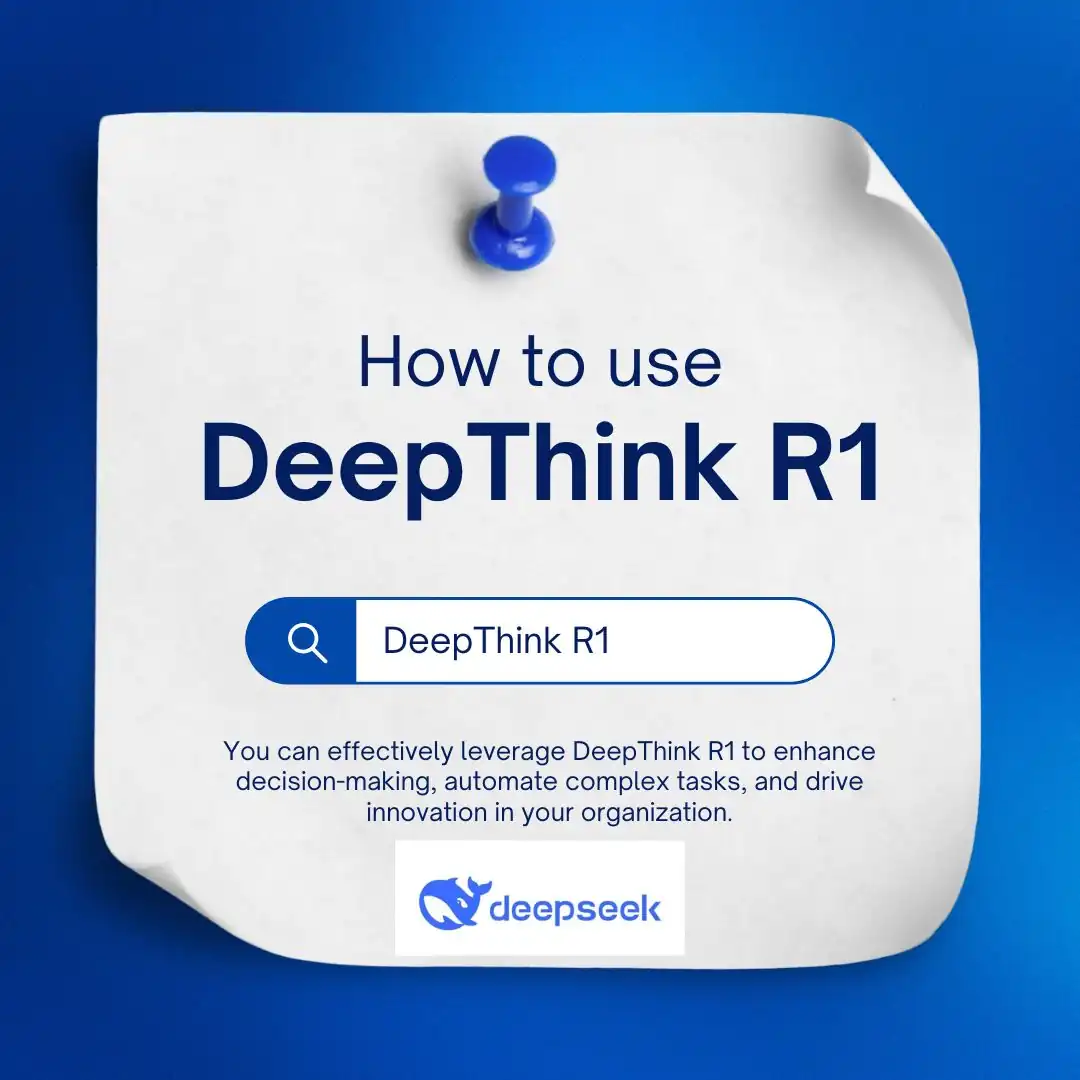Using DeepThink R1 effectively involves understanding its capabilities, setting up the necessary infrastructure, and integrating it into your workflow. Below is a step-by-step guide on how to use DeepThink R1:
Step 1: Understand DeepThink R1’s Capabilities
- Research its features: DeepThink R1 is designed for advanced reasoning, problem-solving, and data analysis. Familiarize yourself with its strengths (e.g., logical reasoning, pattern recognition) and limitations (e.g., data dependency, interpretability).
- Identify use cases: Determine how DeepThink R1 can address your specific needs, such as financial modeling, scientific research, or strategic planning.
Step 2: Set Up the Infrastructure
- Hardware Requirements:
- Ensure you have access to high-performance computing resources, such as GPUs or TPUs, to handle the computational demands of DeepThink R1.
- For smaller-scale use, cloud-based solutions (e.g., AWS, Google Cloud, Azure) can provide the necessary infrastructure.
- Software Requirements:
- Install the required frameworks and libraries (e.g., TensorFlow, PyTorch) if you’re customizing or fine-tuning the model.
- Use APIs or SDKs provided by DeepSeek to integrate DeepThink R1 into your systems.
- Data Preparation:
- Collect and preprocess high-quality data relevant to your task.
- Clean, normalize, and structure the data to ensure optimal performance.
Step 3: Access DeepThink R1
- Cloud-based access: If DeepSeek offers DeepThink R1 as a cloud service, sign up for an account and obtain API keys or access credentials.
- On-premise deployment: For organizations requiring local deployment, follow the installation and configuration guidelines provided by DeepSeek.
Step 4: Integrate DeepThink R1 into Your Workflow
- API Integration:
- Use the provided API endpoints to send data to DeepThink R1 and receive outputs.
- Example: Send a dataset for analysis and receive insights or predictions.
- Custom Applications:
- Develop custom applications or dashboards to interact with DeepThink R1.
- Example: Build a financial forecasting tool that leverages DeepThink R1’s reasoning capabilities.
- Automation:
- Automate repetitive tasks by integrating DeepThink R1 into your existing systems (e.g., CRM, ERP).
Step 5: Train or Fine-Tune the Model (Optional)
- If DeepThink R1 supports customization, fine-tune the model using your domain-specific data.
- Use transfer learning techniques to adapt the model to your unique requirements.
Step 6: Test and Validate
- Run pilot tests to evaluate DeepThink R1’s performance on your specific tasks.
- Validate outputs against known results to ensure accuracy and reliability.
Step 7: Deploy and Monitor
- Deploy DeepThink R1 in your production environment.
- Continuously monitor its performance and retrain or update the model as needed.
Step 8: Address Ethical and Compliance Concerns
- Ensure data privacy and security by adhering to relevant regulations (e.g., GDPR, HIPAA).
- Mitigate biases by regularly auditing the model’s outputs and training data.
Example Use Cases
- Financial Analysis:
- Use DeepThink R1 to analyze market trends, predict stock prices, or optimize investment portfolios.
- Healthcare:
- Apply DeepThink R1 to diagnose diseases, analyze medical images, or develop personalized treatment plans.
- Education:
- Leverage DeepThink R1 to create adaptive learning systems or automate grading.
- Research:
- Utilize DeepThink R1 for scientific data analysis, hypothesis generation, or simulation modeling.
Tips for Effective Use
- Start with small-scale projects to understand DeepThink R1’s capabilities and limitations.
- Collaborate with data scientists and domain experts to maximize its potential.
- Stay updated with DeepSeek’s documentation and support resources for new features and best practices.
By following these steps, you can effectively leverage DeepThink R1 to enhance decision-making, automate complex tasks, and drive innovation in your organization.







Leave a Reply